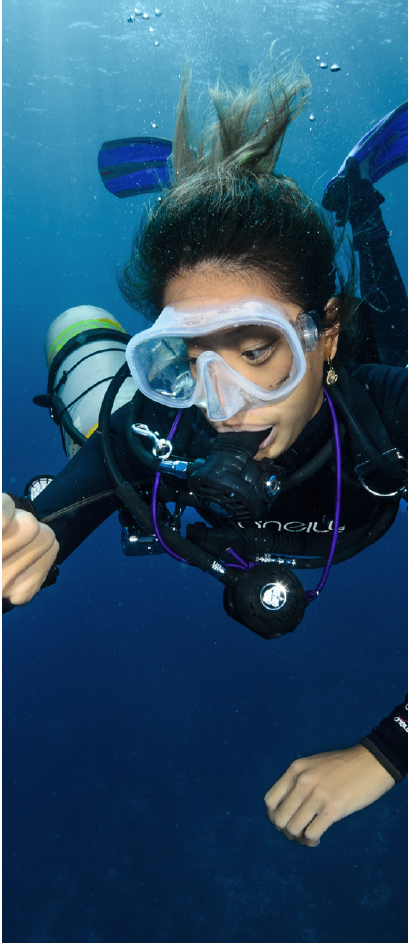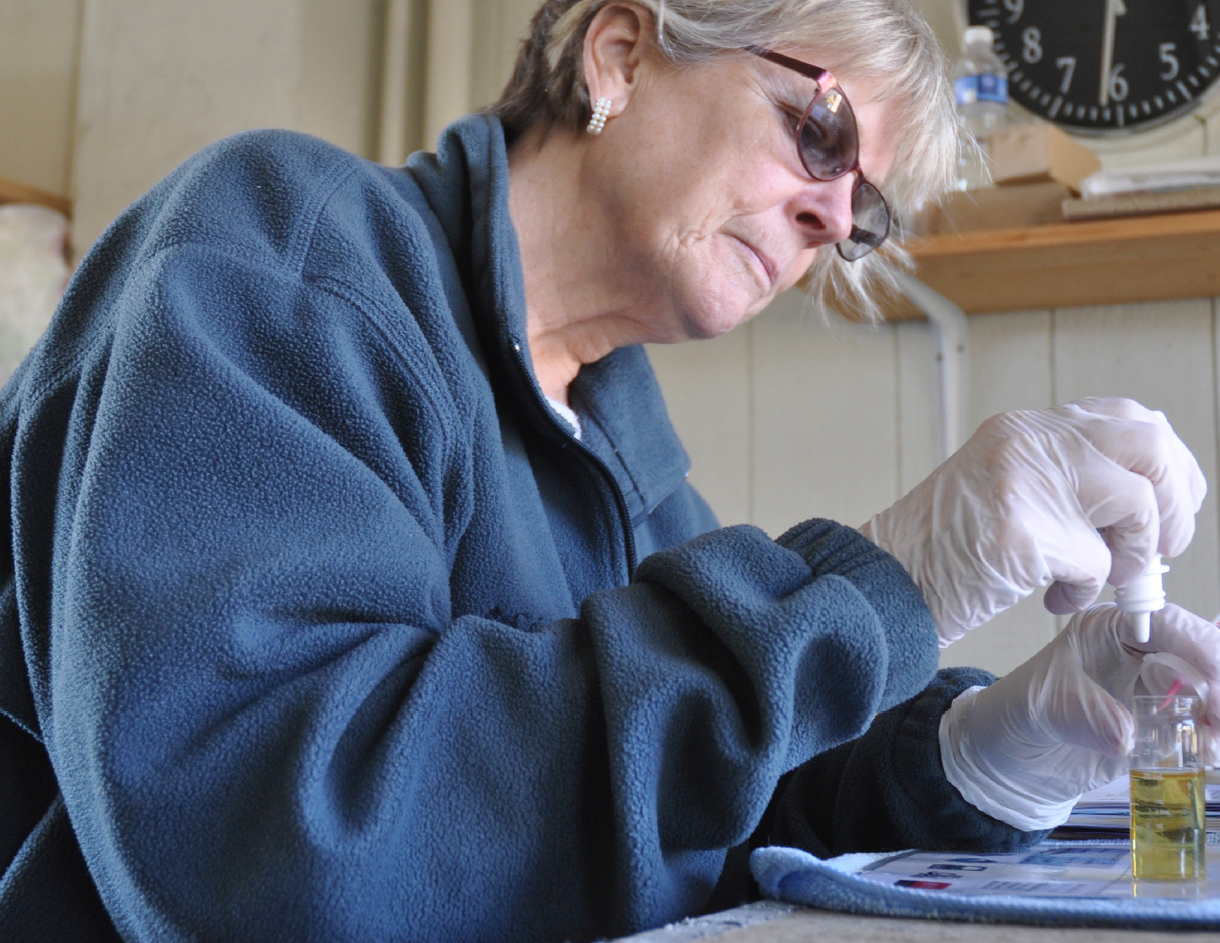
GRANTS
The GRP offers an evolving suite of grant opportunities corresponding to its initiatives.
TOTAL AWARDS
22 grants totaling $20,325,509 resulting from 4 competitions:
- Understanding Gulf Ocean Systems Grants 2
- Thriving Communities Grants 5
- Safer Offshore Energy Systems Grants 4
- 2019 Early-Career Research Collaboration Grants
OVERSIGHT
Oversaw 50 existing grant awards in progress from previous years, 16 of which reached completion in 2019.
2019 GRANTS BY CATEGORY
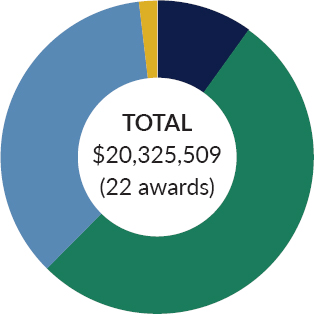 |
|
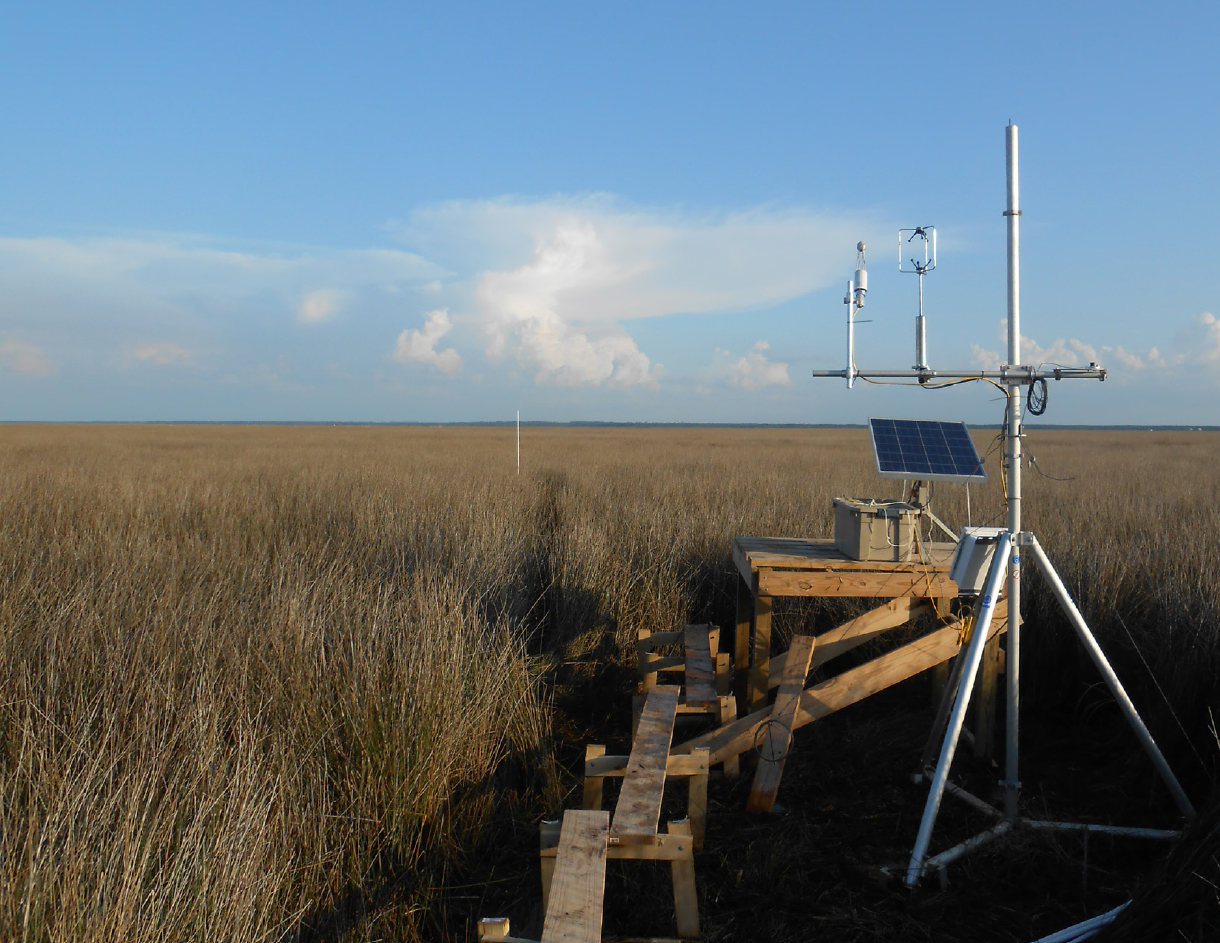
UNDERSTANDING
Gulf Ocean Systems Grants 2
TOPIC
Fostering Innovation to Improve Understanding and Prediction of the Gulf of Mexico Loop Current System
TOTAL
Seven projects totaling $2,015,784
| AWARD AMOUNT | PROJECT DIRECTOR | PROJECT TEAM AFFILIATION |
| $78,000 | George Forristall | Forristall Ocean Engineering, Inc. |
OVERVIEW: This project will develop a forecast system, ForLoop, which will pull information from machine learning algorithms and 26 years of open-source data on daily sea level fluctuations. ForLoop will allow users to digitize sea level or surface temperature maps to predict Loop Current and Loop Current Eddy locations and estimate the probability that the current or an eddy will affect a specific location over a range of forecasted periods.
| AWARD AMOUNT | PROJECT DIRECTOR | PROJECT TEAM AFFILIATION |
| $283,847 | Haosheng Huang | Louisiana State University |
OVERVIEW: Researchers will nest an unstructured grid Finite Volume Community Ocean Model—a type of 3D ocean model—within the Gulf of Mexico. They will use the model to simulate energy conversion processes and the interactions between Loop Current Frontal Eddies (LCFEs) and changes in ocean floor depth. The goal is to establish an ocean forecasting system for the Gulf that is capable of an accurate 1–2-week Loop Current forecast. In addition, the team will create a 20-year satellite data archive to detect and analyze LCFE merging events that occur before eddy detachments and separations.
| AWARD AMOUNT | PROJECT DIRECTOR | PROJECT TEAM AFFILIATION |
| $349,874 | Vassiliki Kourafalou | University of Miami |
OVERVIEW: Understanding the dynamics of the western Caribbean Sea and southern part of the Yucatan Channel is critical for predicting the Loop Current System’s behavior. This project will quantify improvements in prediction skill when these Caribbean Sea observations are incorporated into forecasting models. Observations and high-resolution model simulations will provide a more detailed, objective description about the size, magnitude, and pathway of warm, circular currents (known as anticyclonic eddies) passing through the Yucatan Channel; and their relation to the anticyclonic eddies evolving inside the Gulf of Mexico.
| AWARD AMOUNT | PROJECT DIRECTOR | PROJECT TEAM AFFILIATION |
| $302,287 | Helga Huntley | University of Delaware |
OVERVIEW: This project will apply physics-based concepts to develop a new methodology to identify imminent Loop Current Eddy shedding events and the dynamics that cause them. It will also assess how well existing regional models are able to detect waves, currents, tides, and other physical ocean processes that lead to eddy shedding events.
| AWARD AMOUNT | PROJECT DIRECTOR | PROJECT TEAM AFFILIATION |
| $240,729 | Annalisa Bracco | Georgia Tech Research Corporation |
OVERVIEW: This project will explore the interactions between the Loop Current System and the Mississippi-Atchafalaya River System discharge, in terms of seasonal changes, Loop Current position, and the presence of small eddies that range in size from 1 to 10 kilometers. It will also examine the physical processes that drive horizontal and vertical mixing in the portion of the northern Gulf of Mexico where the water is deeper than 150–200 meters.
| AWARD AMOUNT | PROJECT DIRECTOR | PROJECT TEAM AFFILIATION |
| $346,179 | Laurent Cherubin | Florida Atlantic University |
OVERVIEW: Using 18 years of sea surface height (SSH) fields and subsurface observations, this project will apply machine learning tools to predict Loop Current speed, vertical structure, and duration to examine the eddy formation and shedding processes. The project aims to improve the predictive capability of the location and duration of the Loop Current over a forecast period of 1 month; eddy shedding at 2–3 months; and predictive skill for Loop Current and Loop Current Eddy speed, vertical structure, and duration over a several day forecast.
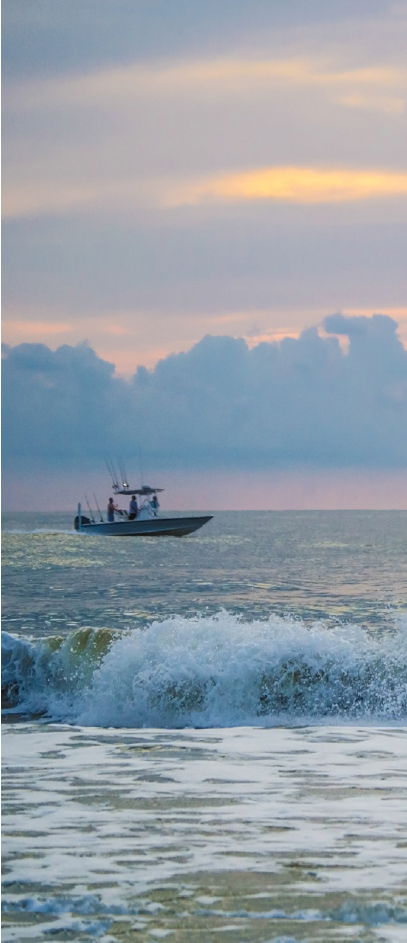
| AWARD AMOUNT | PROJECT DIRECTOR | PROJECT TEAM AFFILIATION |
| $414,868 | Uwe Send | The Regents of the University of California, San Diego |
OVERVIEW: This project will design a transport monitoring system in the Yucatan Channel (YC), drawing on data collected from 19 moorings and 99 sensors between 2018 and 2019. In addition, the team will develop and test innovative mooring designs that would enable real-time data transmission to shore. The goal is to leverage the existing intensive data set to determine which YC conditions are most critical to monitor, and identify the most cost-effective way to do so.

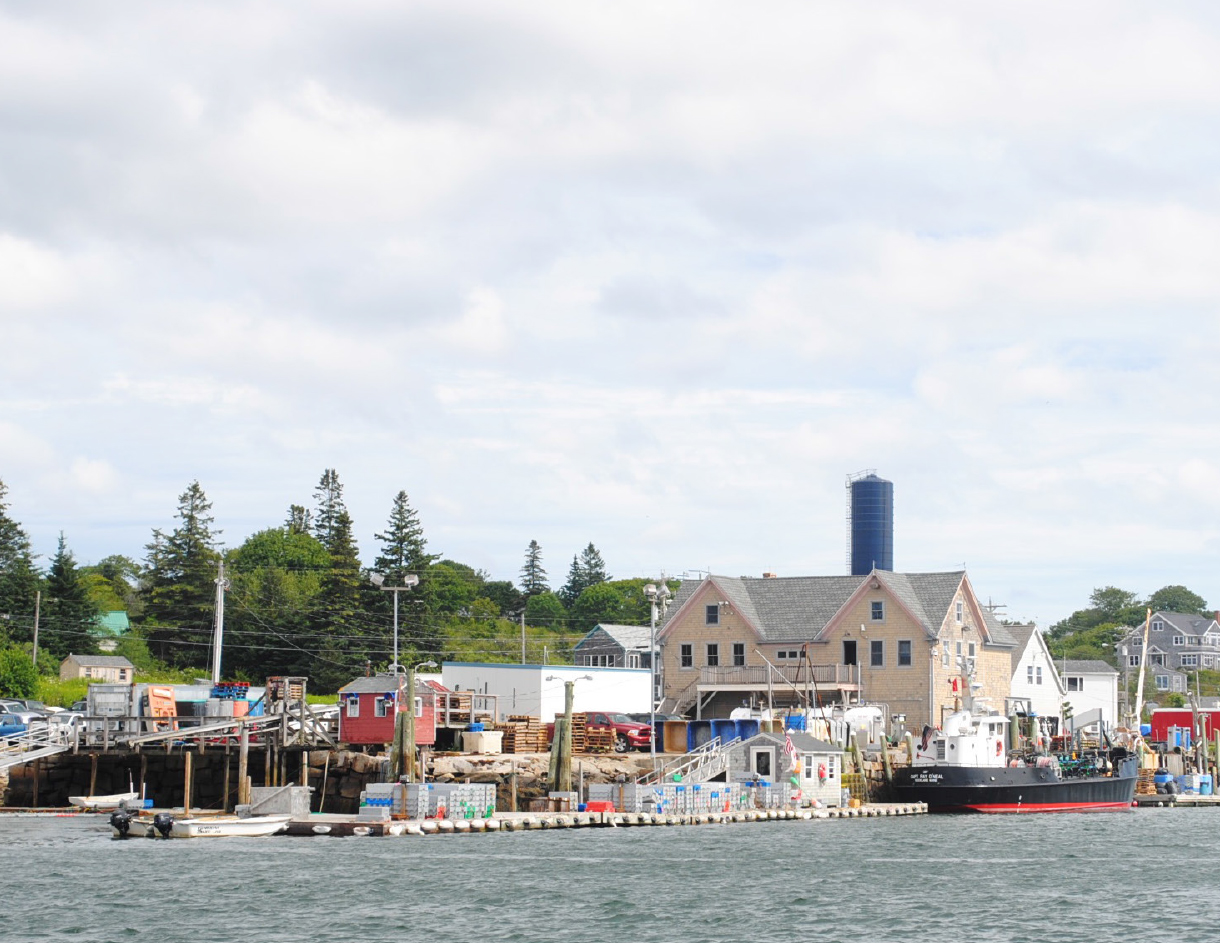
THRIVING
Communities Grants 5
TOPIC
Enhancing Coastal Community Resilience and Well-Being in the Gulf of Mexico Region
TOTAL AWARDS
Four projects totaling $10,674,731
| AWARD AMOUNT | PROJECT DIRECTOR | PROJECT TEAM AFFILIATION |
| $2,978,552 | Carlos Martín | Urban Institute |
OVERVIEW: Climate change is already driving population migrations, especially along the Gulf Coast. However, the capacity of destination communities to prepare for and integrate people who are displaced by natural disasters and climate change—known as climate migrants—has received little attention. This project will examine communities in Florida, Louisiana, and Texas that are already receiving climate migrants to determine the communities’ capacities to integrate them at the point of migration and the migrants’ effects on housing and employment markets, financial services, health care providers, and social and cultural facilities. The project team will use findings to develop actionable information that Gulf communities can use in their preparation for and integration of expected future climate migrants.
| AWARD AMOUNT | PROJECT DIRECTOR | PROJECT TEAM AFFILIATION |
| $2,101,958 | Maureen Lichtveld | Administrators of the Tulane Educational Fund aka Tulane University |
OVERVIEW: The United Houma Nation is a Louisiana state-recognized tribe primarily based in southeastern Louisiana that is striving to maintain its unique culture amid dramatic climate, environmental, and socioeconomic change. While tribal citizens have sustained livelihoods and communities in a shifting landscape for generations; today, ongoing coastal land loss combined with the cumulative impacts of health, social, and economic disparities have created unprecedented challenges for the tribe. The goal of this project is to determine how the United Houma Nation can adapt to climate-related and other short- and long-term stressors while maintaining the integrity of its community and culture. The project team will collaborate with the United Houma Nation to examine existing and emerging stressors, identify resilience strategies, and produce actionable information, tools, and interventions that can be used by the tribe to navigate these challenges. Project outputs will be useful to other Gulf Coast communities facing similar issues.
| AWARD AMOUNT | PROJECT DIRECTOR | PROJECT TEAM AFFILIATION |
| $2,190,667 | Maria Lemos | University of Michigan |
OVERVIEW: Communities along the Gulf coast are coping with stronger and more frequent storms that are expected to worsen in the future, and it is increasingly challenging to anticipate and prepare for these events. To increase their future resilience, cities need to plan to respond and adapt, yet many currently lack the capacity to do so. Enabling cities to engage more easily and consistently with scientists and organizations working on resilience and climate adaptation is a way to build this capacity, but cost-effectively maintaining and scaling up such engagement can be difficult. This project seeks to help cities build their climate adaptation capacities by finding more cost-effective methods to build relationships with scientists and organizations that can assist them. The project will use different technology-assisted communications methods to work with 60 cities throughout Alabama, Florida, Louisiana, Mississippi, and Texas to assess their vulnerability and integrate climate adaptation into existing planning processes. It will identify best practices that can guide similar efforts elsewhere.
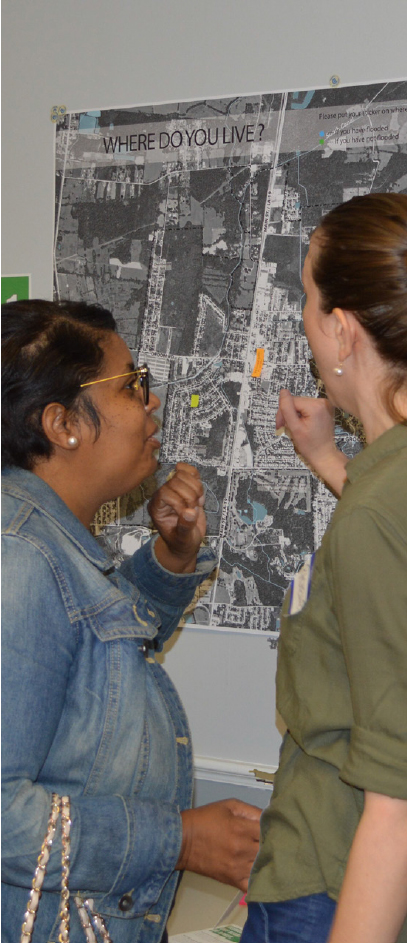
| AWARD AMOUNT | PROJECT DIRECTOR | PROJECT TEAM AFFILIATION |
| $3,403,554 | Christopher Emrich | University of Central Florida |
OVERVIEW: The first line of defense for residents and their resilience is housing protected from natural hazard impacts. Yet, many residents remain unaware that the building codes and zoning regulations they expect to protect them become outdated as environmental stressors, local development patterns, materials science, and construction practices change. Improved residential risk disclosure is a key component for building resilient communities. To make informed decisions about where to live and how to protect housing investments, residents require knowledge about potential natural hazard exposure and impacts along with available mitigation strategies. This project aims to advance community resilience by improving people’s understanding of risks and their willingness to undertake hazard mitigation when choosing where they live. The project team will work with communities throughout the Gulf region to test strategies for dissemination and uptake of information on disaster risk and mitigation alternatives. The ultimate goal is to identify practices most likely to result in residents taking actions to reduce risk and increase resilience.

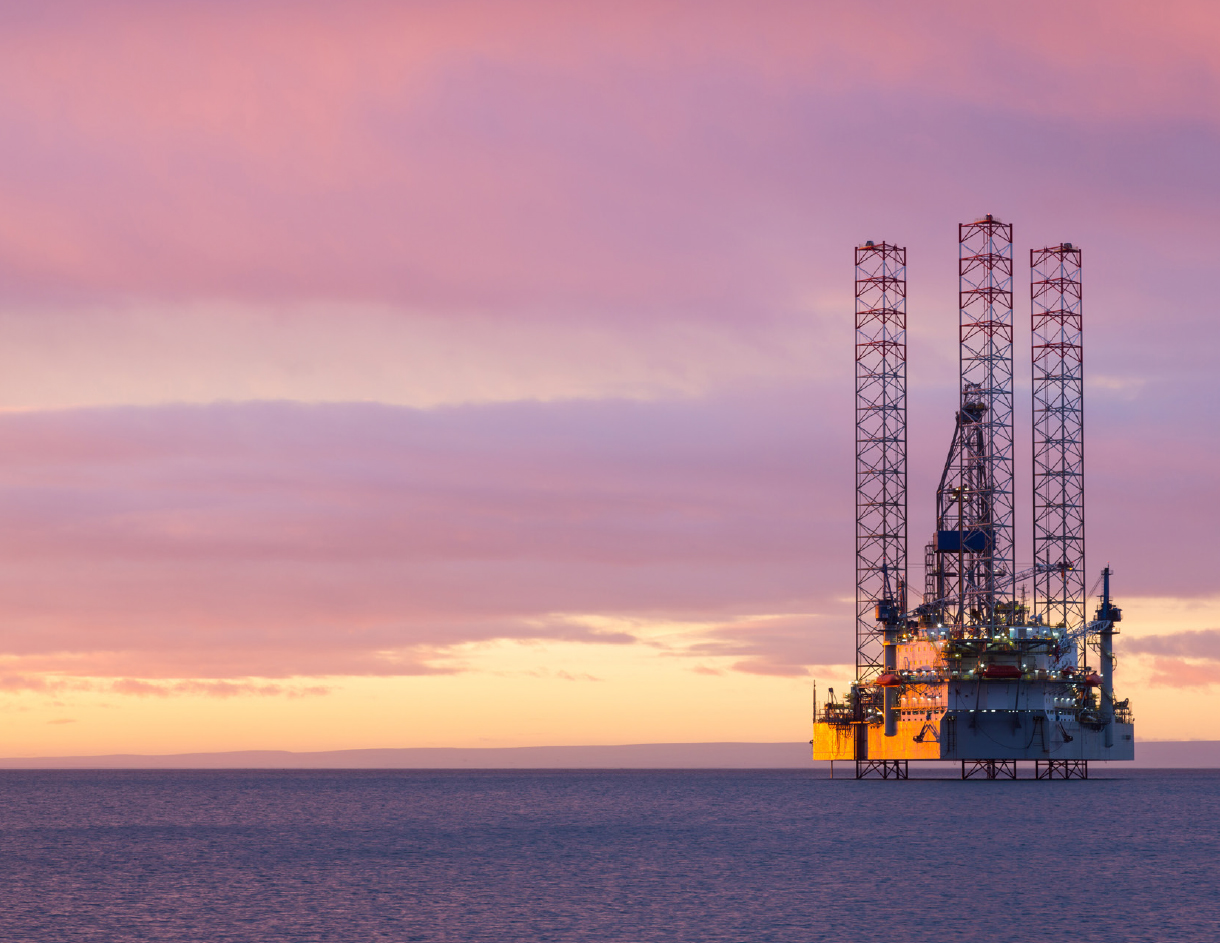
SAFER
Offshore Energy Systems Grants 4
TOPIC
Advancing Safety Culture in the Offshore Oil and Gas Industry
TOTAL AWARDS
Eight projects totaling $7,255,570
| AWARD AMOUNT | PROJECT DIRECTOR | PROJECT TEAM AFFILIATION |
| $739,992 | Xiaozhi (Christina) Wang | American Bureau of Shipping |
OVERVIEW: Historically, government agencies, industry groups, and companies from around the world have collected offshore incident data to help understand and improve safety conditions. However, these data sets were collected at different times and used different terminology and data languages. This project aims to provide recommendations for viable data science technologies that could be employed to aggregate these disparate data sets and establish common goals and metrics to improve understanding of safety risks and trends in the Gulf of Mexico. The desired final product—a comprehensive global offshore incident data set—will help set a foundation for predictive modeling initiatives. The data could inform government and industry decision-making processes such as permitting emerging technologies, setting new regulations or policies to mitigate risk, and choosing exploration projects.
| AWARD AMOUNT | PROJECT DIRECTOR | PROJECT TEAM AFFILIATION |
| $684,054 | Antonie Jetter | Portland State University |
OVERVIEW: Several studies have called for offshore oil and gas workers to adopt best practices from other high-risk industries, including the nuclear power plant and air traffic control industries. However, frontline managers remain unaware of these external best practices, or have trouble customizing them for offshore oil and gas operations. Inspired by so-called “management flight simulators,” this project creates an interactive online platform that allows users to model responses to everyday safety threats. The platform, FOCOS (Fuzzy Operational Cognition of Safety Culture), lets users add, intensify, or stop interventions, and see how their decisions impact the overall system and safety culture. To inform future research and pilot programs, FOCOS will also collect data on uncertain and controversial safety practices and differences in training needs among different users (by role, professional background, and years of experience).
| AWARD AMOUNT | PROJECT DIRECTOR | PROJECT TEAM AFFILIATION |
| $1,440,330 | Kevin McSweeney | American Bureau of Shipping |
OVERVIEW: There is a general perception in the offshore industry that more rules, regulations, and procedures are unlikely to improve safety performance. Instead, the industry needs a better understanding of the social and organizational factors that foster professionalism during routine and emergency situations. This project aims to develop a roadmap that the industry can use to evaluate and improve organizational safety culture, reduce unsafe behaviors, improve individual performance, and reduce management system failures, near misses, and accidents. Deliverables will include a safety culture evaluation toolbox, and data gathering and analytic methods to identify what actions have been, or could be, successful in improving safety.
| AWARD AMOUNT | PROJECT DIRECTOR | PROJECT TEAM AFFILIATION |
| $1,130,591 | Scott Tannenbaum | The Group for Organizational Effectiveness |
OVERVIEW: Safe behavior in the oil and gas industry is influenced by individual safety readiness; the team’s safety assumptions, values, and beliefs; team leader and team member behaviors; and the organization’s safety practices and policies. This project will develop a set of evidence-based assessment tools to diagnose, measure, and track these four factors. It will also provide actionable tips and guidance for addressing potential deficiencies, which existing measurement tools lack. The team’s deliverables will be made publicly available to interested organizations, associations, and researchers.
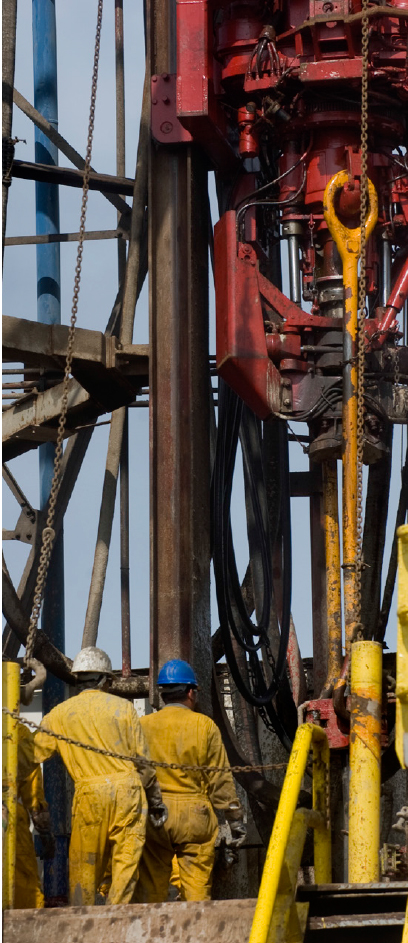
| AWARD AMOUNT | PROJECT DIRECTOR | PROJECT TEAM AFFILIATION |
| $828,113 | Christiane Spitzmueller | University of Houston |
OVERVIEW: Mindfulness exercises are shown to improve employee mental and physical health, but there has been limited work to leverage mindfulness exercises for offshore safety. This academia–industry partnership project will examine how mindfulness affects safety culture, focusing on the perceptions of supervisory safety culture, worker situational awareness, employee burnout and well-being, and employee participation in and compliance with safety behaviors. The team will develop 90-minute “train-the-trainer” programs, along with survey tools to measure program effectiveness so supervisors can guide their employees through mindfulness techniques they can use before their shifts and before high-risk situations.
| AWARD AMOUNT | PROJECT DIRECTOR | PROJECT TEAM AFFILIATION |
| $943,008 | Stephanie C. Payne | Texas A&M University |
OVERVIEW: Traditionally, safety culture is measured with a lengthy annual employee survey. Survey methodology is fraught with limitations, including low response rates, considerable time required to summarize and interpret data, and failure to capture meaningful changes between surveys. This project aims to develop and test field-friendly measurement tools, including experience sampling methodology and wearable devices; and to design, develop, and evaluate the value of a dashboard called EMPOWER (Evaluate, Measure, Promote Offshore Worker Engagement and Readiness). The EMPOWER dashboard will display worker psychological (safety culture) and physiological (lack of fatigue or readiness) data on an interactive interface that supervisors can access daily to support organizational decision making. The research team will evaluate the extent to which supervisors value and anticipate using such previously unavailable data in real time; as well as the data’s impact on hypothetical offshore scenario-based decision making.
| AWARD AMOUNT | PROJECT DIRECTOR | PROJECT TEAM AFFILIATION |
| $733,631 | Ivan Damnjanovic | Texas A&M University |
OVERVIEW: Measuring organizational commitment to safety is particularly challenging in the offshore oil and gas industry, as 80 percent of personnel are third-party contractors. The industry’s reliance on external contractors means team members may not share the same training, experiences, and even language. Rather than measuring safety culture in broad terms, this project aims to develop quantifiable measurements of safety culture improvements that are specific to three categories: activity, team (e.g., contractors versus onshore-based specialists), and the type of offshore installation. It will also provide a tool for measuring safety culture while work orders are being planned and executed; and a tool to help offshore plant managers specify project requirements (e.g., communication requirements) that could improve safety culture.
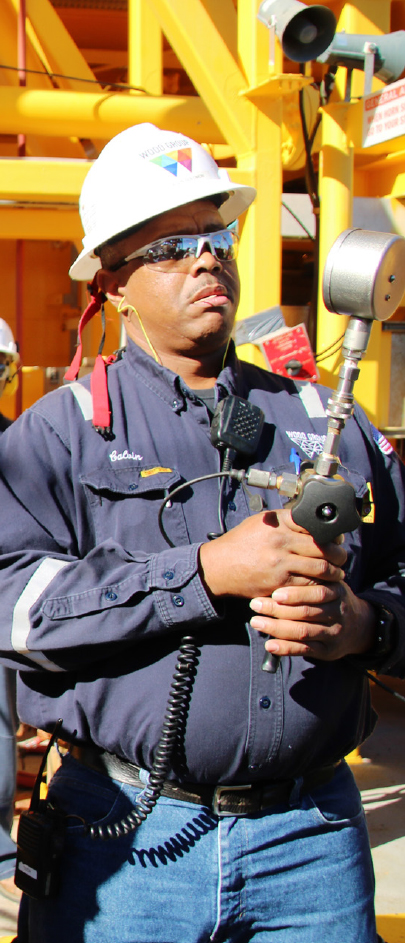
| AWARD AMOUNT | PROJECT DIRECTOR | PROJECT TEAM AFFILIATION |
| $755,851 | Daniel Adjekum | University of North Dakota John D. Odegard School of Aerospace Sciences |
OVERVIEW: In the offshore environment, minor workplace accidents tend to go unreported because individuals fear blame. However, several minor unreported safety risks can be precursors for catastrophic accidents, as was the case with the 2010 Deepwater Horizon disaster. Offshore oil and gas safety regulators have recognized the need for a more proactive reporting system—and a culture shift—that encourages workers to report mistakes and near misses, identify the potential for error, and even stop work when needed. This project will assess the viability of an offshore safety action reporting system modeled after the Aviation Safety Action Program by using focus groups, interviews, and a quantitative survey of about 1,500 personnel. It will also assess gaps between the perceived level of safety reporting culture and the actual level of safety reporting in the Gulf of Mexico oil and gas industry.
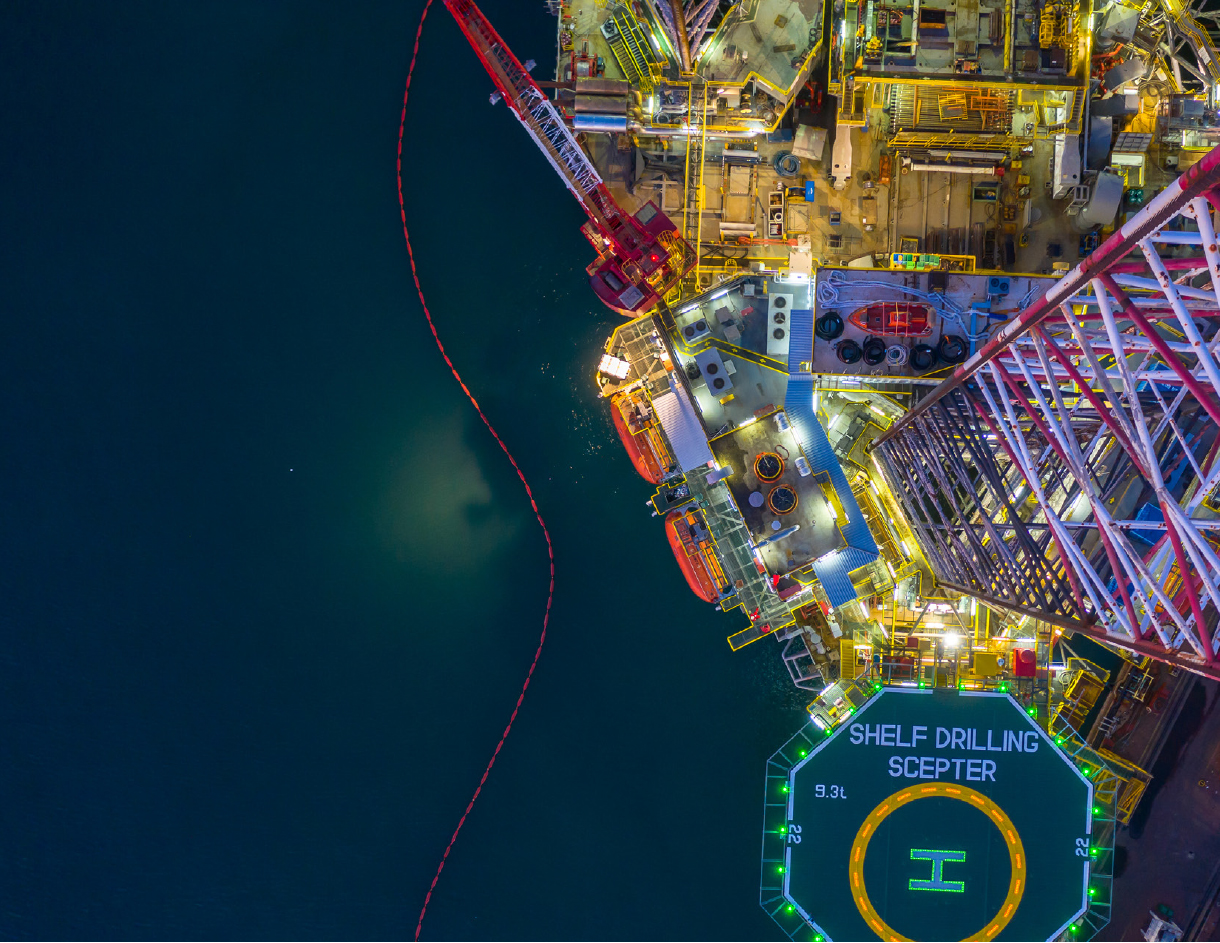
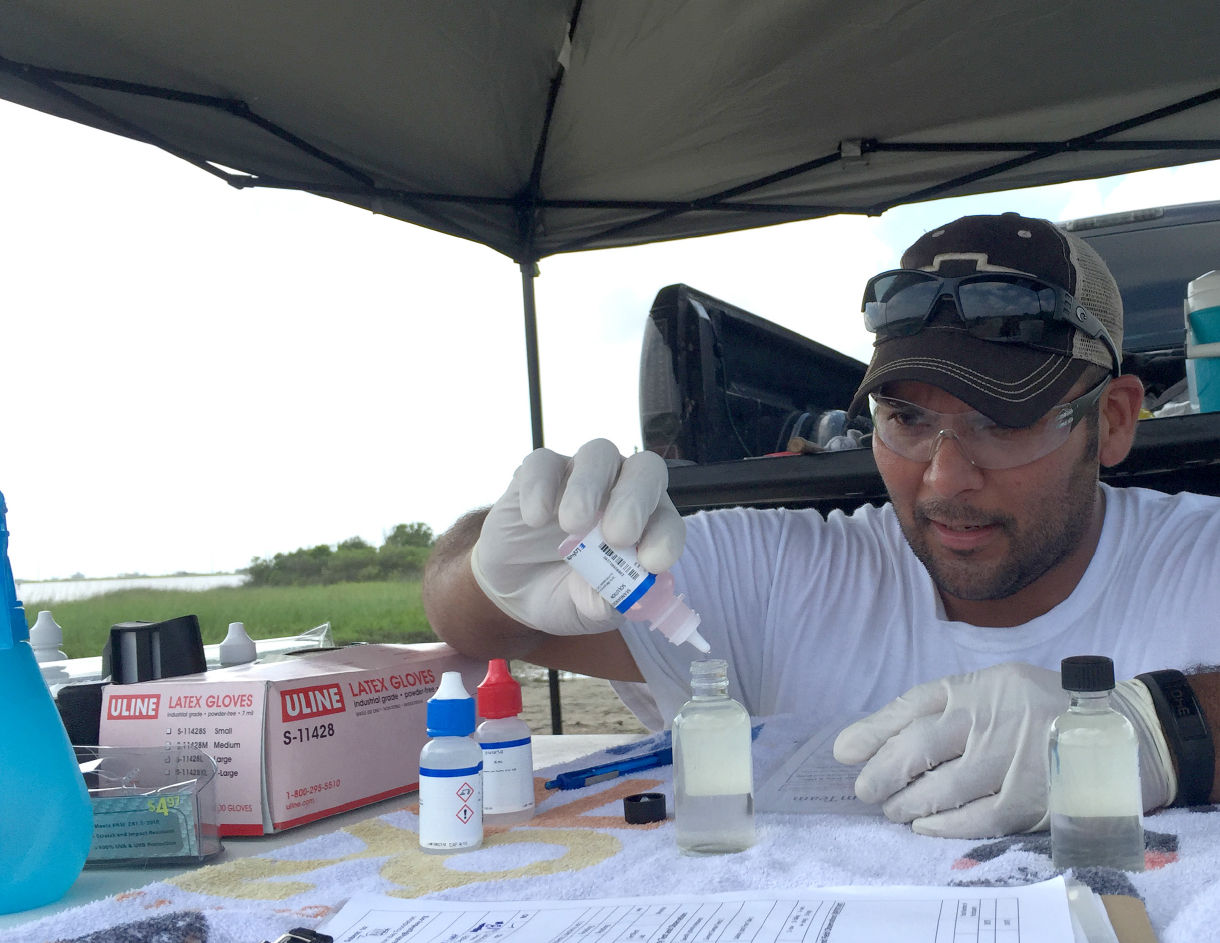
2019 EARLY-CAREER
Research Collaboration Grants
TOTAL AWARDS
Three projects totaling $379,424
| AWARD AMOUNT | PROJECT DIRECTORS | PROJECT TEAM AFFILIATION |
| $82,789 | Wanyun Shao, YeongAe Heo, and Christoph Aeppli | University of Alabama, Case Western Reserve University, and Bigelow Laboratory for Ocean Sciences |
OVERVIEW: Aging infrastructure coupled with climate change have increased the risk of coastal hazards for energy infrastructure. Most energy infrastructure systems are more than 30 years old. Aging oil and natural gas (OG) systems have deteriorated due to chemical reactions (e.g., corrosion) and become more vulnerable to significant failures that can trigger detrimental OG spills. Compounding this issue, potential dynamic forces acting on these deteriorating systems have increased due to intensifying extreme weather events such as storm surge induced by hurricanes and floods. Meanwhile, no integrated method exists to estimate the probability, amount, and toxicity of OG released under different scenarios of flood impacts. No interdisciplinary approach is available to estimate the full cycle of oil system risk, from hazards to marginal damages across multiple damage channels. There is also a lack of estimation connecting oil spill risk with societal impacts. The objectives of the proposed project include to (1) assess the effects of aging and climate change on the coastal hazard risk for oil systems; (2) predict potential oil dispersion and estimate human and ecosystem health risks from oil system failures; (3) systematically quantify socioeconomic vulnerability to environmental disruptions caused by oil system failure; and (4) identify the gaps between key stakeholders’ risk perceptions and the scientific risk assessment on both temporal and spatial dimensions. The project outcomes will contribute directly to the GRP’s mission and benefit local, national, and international engineering, scientific, public, and decision-making communities.
| AWARD AMOUNT | PROJECT DIRECTORS | PROJECT TEAM AFFILIATION |
| $129,215 | Christopher Patrick and Hannah Vander Zanden | Texas A&M University and University of Florida |
OVERVIEW: Coastal rivers link coastal watersheds to marine ecosystems and provide important habitat for many commercially important marine species, amphidromous species (species that use both freshwater and marine habitats), and rare/threatened species. However, the coastal plain is one of the least studied ecosystems in North America. Therefore, it is necessary to increase understanding of coastal river ecology. The proposed work implements stable isotope analysis to assess the usage of coastal river habitat by marine species along the Texas coast line. Fish, invertebrates, and basal resources from 10 rivers and downstream estuaries will be analyzed to determine the abundance and distribution of marine nutrients in migratory estuarine fish and resident freshwater fish. The study sites allow for investigation of the prevalence of marine nutrients, the impact of human land use, impoundments, and climate-mediated freshwater inflow on marine species movement.
| AWARD AMOUNT | PROJECT DIRECTORS | PROJECT TEAM AFFILIATION |
| $167,420 | Michael Martinez-Colon, Jill McDermott, and Adrienne Correa | Florida A&M University, Lehigh University, and Rice University |
OVERVIEW: Benthic foraminifera (BF) are a group of ubiquitous shelled protists with cosmopolitan distributions in benthic environments. Because of their short community response times to pollution, many groups of BF are considered prominent biomonitoring indicators. One widely used BF index is the FORAM Index (FI), which has been applied in all ocean basins as an indicator of water quality. The main objectives of this research are to (1) determine the distribution of heavy metals in porewater versus in the solid components of sediment; (2) identify specific microbial community members or genes that mediate heavy metal transformations and by inference, detoxify sediments; (3) determine the spatiotemporal distribution of BF; and (4) integrate across these data sets to assess the effectiveness of the FI as a biomonitor to stressors in coral reefs.
